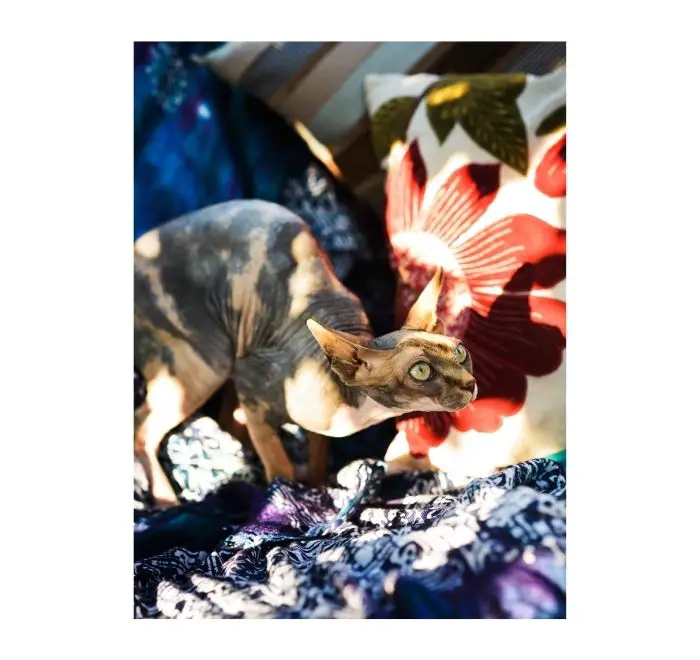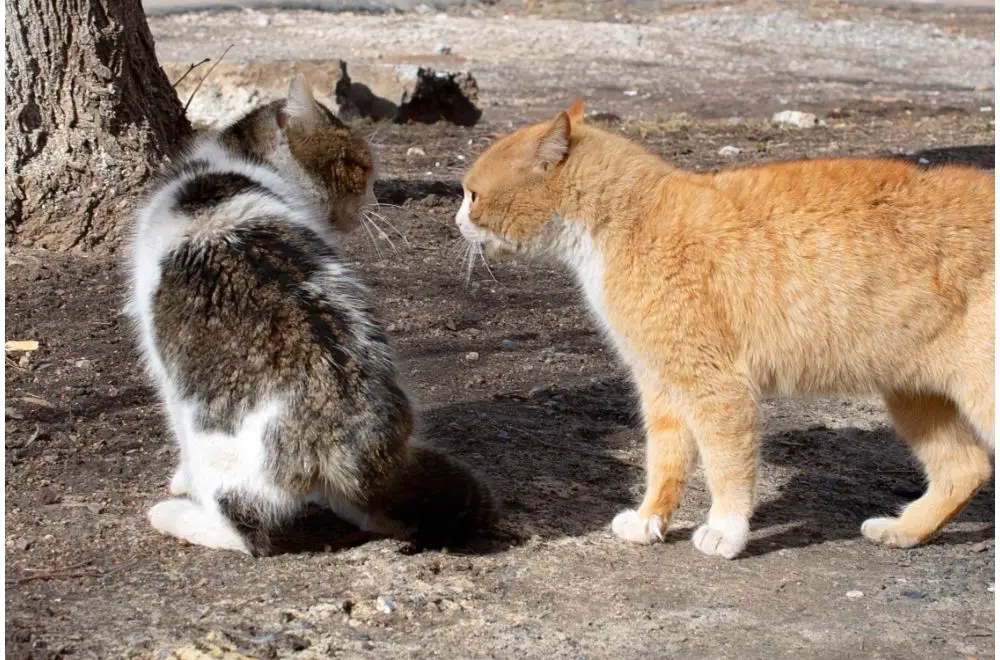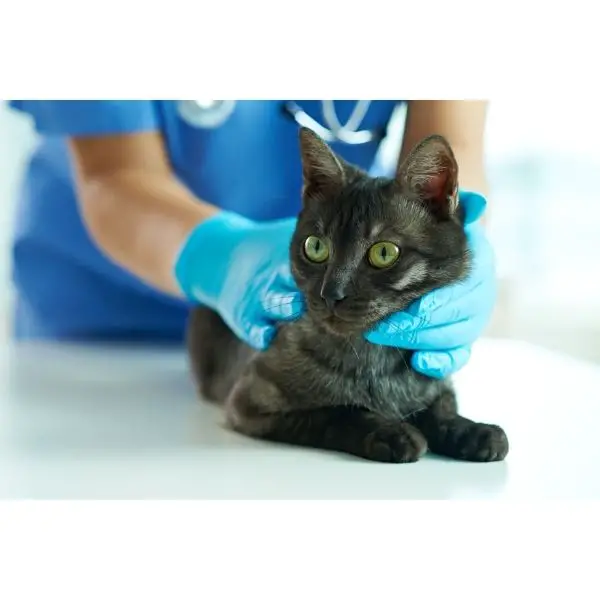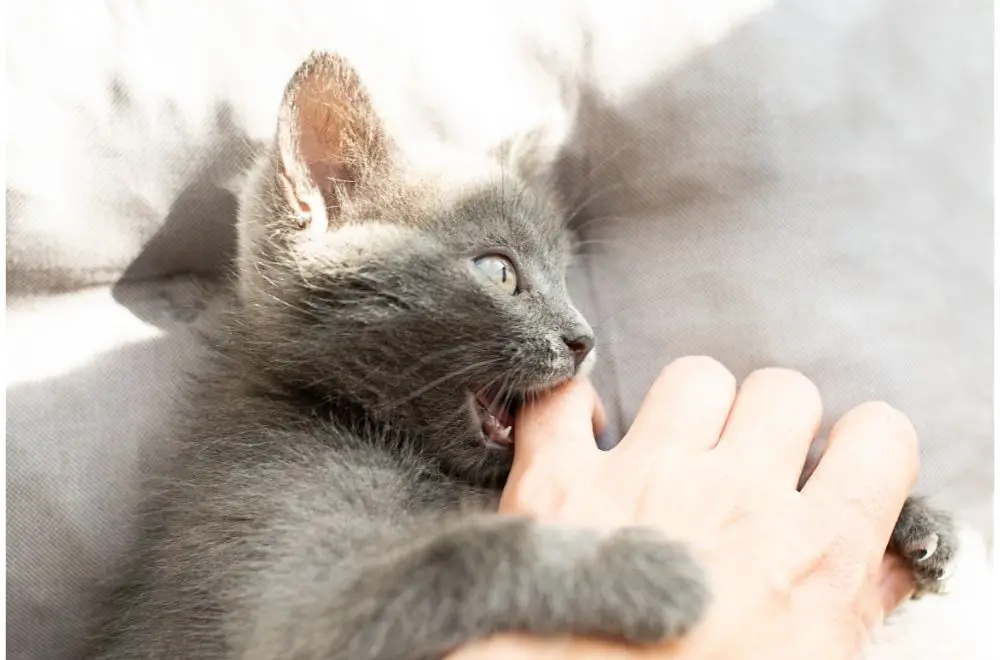As a cat owner, you will already be aware that your cat performs many behaviors. It’s a wonderful feeling when your cat purrs on your lap or winds around your legs. But what about cat aggression?
Defining cat aggression
Aggression is defined as direct harmful or threatening behavior towards another animal or person. The term aggression refers to a variety of complex behaviors that can arise for different reasons. depending on the circumstance. In cats, aggression manifests in various ways, ranging from hissing to full-blown attacks.
The importance of body language

Cats often use parts of their body, such as the tail, to communicate their feelings and needs. It is important that you learn to recognize such movements, so you can accurately assess a situation.
Cats generally only resort to aggression when they feel there is no other alternative. Odds are, your cat will have been using subtle signs to communicate its distress in the moments before an attack.
Cat body language consists of a mixture of facial expressions and body postures. They also convey messages through the position of body parts like the tail, ears, and even the whiskers. The body language of a cat is more subtle than a dog. So, knowing the basic postures of cat language will help you deal more effectively with problems if they arise.
Offense vs. Defense
Aggression can be either defensive or offensive. A cat that’s on the offensive will make himself look bigger and therefore, more intimidating. A cat that’s on the defensive will try to make himself look smaller.
What are the types of cat aggressive postures?
Below are some of the more common feline postures that indicate aggression. If you notice your cat is acting out these behaviors it is best to keep a distance until he calms down. Moving towards an aggressive or defensive cat may be seen as a threat. You should NEVER punish a cat under any circumstances.
Offensive posture
- A direct stare, with upright ears and the backs rotated slightly forward
- A stiff, straight-legged upright stance
- The tail is lowered, stiff, or held down to the ground
- The rear end is raised, the back sloped downward towards the head, and stiffened hind legs
- Hackles are up, including the tail
- Constricted pupils
- Yowling, growling, or howling
- Directly facing an opponent and possibly moving in that direction
Defensive posture
- Crouching
- Eyes wide open with pupils either fully or partially dilated
- Cat’s head is tucked in
- Tail curved around the body and tucked in
- Open-mouthed hissing or spitting
- Raised hackles
- Turns sideways to another animal, not straight on
- Could deliver quick strikes with the front claws
Overt aggression:
- Fighting, biting, growling, shrieking, scratching
- Rolling onto its back with teeth and claws exposed
What are the types of cat aggression?
The first thing you need to do when managing an aggressive cat is to rule out any potential medical causes. Osteoarthritis, dental problems (such as periodontal disease), hyperthyroidism, and problems with the central nervous system can all cause potential aggression. If your cat has suddenly become aggressive, you should make an appointment with your vet to ensure there are no underlying medical conditions present.
If your cat has been cleared by the vet, you will need to identify the type of aggression you are dealing with. Then you can develop an intervention plan!
There are many different reasons why a cat may become aggressive. Let’s run through the main ones now:
Status aggression

Triggers:
Male cats (and sometimes females) can show aggression towards other male cats once they approach social maturity, which generally occurs between two and four years of age.
Solution:
In this instance, you will need to ensure that all the cats involved are neutered or spayed as sexual hormones can incite aggressive behavior.
Fearful or defensive aggression
Triggers:
When a cat perceives a threat and can’t escape from it, the situation can escalate quickly. The more threatening the animal or object appears to the cat, the more heightened the reaction will be which can lead to aggression.
Solution:
The best course of action is to leave the cat alone until it has calmed down.
Territorial aggression
Triggers:
Both sexes are territorial, but males are more so. Depending on the circumstance, a cat’s attack may be directed toward other cats, other pets, or its owners as a sign of dominance.
Solution:
If you have recently added a new cat to your household, this may well be the cause of aggression. Never rush an introduction as cats are known to be very territorial animals. If one of your cats is acting out, you will need to separate the new cat into a different room with its own toys, food, and water bowls so the cats can smell each other but not see each other.
After a few days, you can begin to reintroduce your cats for short periods. Either place the cats in the same room in cat carriers or on leashes and harnesses so they can see each other but cannot interact. Then you can move on to feeding them separately but in the same room so they begin to associate each other with pleasant experiences.
You can continue this process over several days, with the distance becoming smaller between them at each stage. If any signs of aggression are shown, you will need to move back a step. It is important to be patient with cats and let them accept each other in their own time.
Redirected aggression
Triggers:
This is perhaps the most dangerous form of aggression because attacks are often sudden and potentially damaging. The bites are often unprovoked as they are usually caused by another environmental factor, that as humans, we often fail to notice. Redirected aggression is when your cat is extremely agitated and aggressively aroused yet can’t get to the cause of its agitation.
When the cat can’t get to the source of its’ agitation, the aggression is turned to whoever is nearby. Often, there can be a delay between the trigger and the redirected aggression from minutes to hours, which can make it difficult to work out the cause.
Triggers can be anything from the stress of stalking prey through a window, seeing another cat, or smelling another cat’s odor on a family member, clothing, or a visitor. So, you will need to observe your cat closely to try to determine the reason for the re-directed aggression.
Solution:
The best way to deal with redirected aggression is to remove or cover whatever is upsetting your cat. You can close the curtains, use a spray to deter stray cats, or remove any clothing that may be affecting your cat.
Pain-induced and irritable aggression

Triggers:
Cats that are in pain can become aggressive as they often don’t want to be touched. Alternatively, specific movements or activities may cause the pain to become more intense. Once the painful parts have healed, most cats will stop being aggressive.
Solution:
Don’t touch the parts of your cat that are painful. You can work with your vet to give your cat some type of pain control to help while your cat is healing.
Maternal aggression
Triggers:
Maternal aggression can happen when a mother cat feels the need to protect her kittens from potential danger. It often is directed toward other cats but it can be directed at people as well. Mother cats can be highly aggressive when protecting their young, so you should avoid handling the kittens for the first few days after birth.
Solution:
Provide a quiet, low-stress environment, and avoid contact with the mother or kittens if the mother becomes aggressive. Always keep visitors to a minimum.
Play aggression

Triggers:
Kittens and young cats that weren’t raised with littermates or haven’t had the opportunity to play with other cats or kittens can show play aggression. Cats learn that biting and scratching is wrong through play, as it often causes other playmates to retaliate or even stop playing altogether.
Solution:
See if there is a pattern to where and when the play aggression occurs. If there is, distract your cat by playing with it or restrict its access to the area where the behavior occurs. You can also walk away and ignore your cat when it plays aggressively just like its littermates would have done!
Conclusion
Aggressive behavior in your cat is not something to be taken lightly. It can be dangerous to you and it can be hazardous to other pets in your home. However, if the aggression isn’t caused by pain or illness, these tips will help you curb the aggression in your cat.





